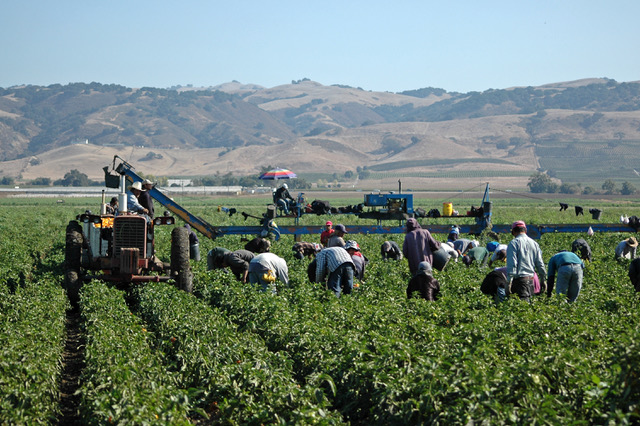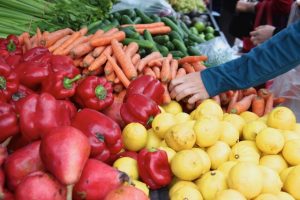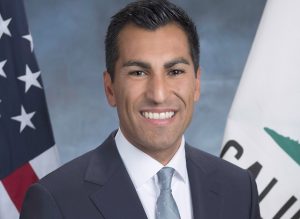
It’s A Perilous Moment: What is to be Done?
February 17, 2025 Michael R. DimockI worry for our nation and the movement to fix the food system. What will an administration that favors big corporations, ignores the separation of powers and shows no empathy for the multitude of lives it’s impacting cost us? Undocumented workers have been deported and hundreds of thousands more fear the same. What will this do to farms, processing plants and restaurants? The DOGE wrecking ball is already damaging communities and people working on the food system’s frontlines. Roots of Change is working with three USDA grants aiding ranchers and small farmers that may end; it would mean a 30% reduction in our budget and force hard decisions. Over 100 thousand nonprofits in the U.S. face similar peril and some have already folded. This is an unprecedented threat to the good food movement and especially to rural and low income families. It demands a bold response.
Last week in Spokane, I witnessed real world impacts at the Society for Range Management (SRM) conference. It’s attended by ranchers, advocates, university, state, and federal agency research and implementation partners healing our planet’s grasslands, the continent’s largest ecological landscape. The SRM trade show features nonprofit and agency staff recruiting talent and promoting programs as well as representatives from rural businesses selling tools, hi-technology, equipment and consultation to ranches and agencies. The federal budget freeze decimated the previously confirmed list of agency attendees. Numerous business owners spoke to me of their concern over the absence of buyers. These conversations sparked a sleepless night with many thoughts.
-
Tariffs and cuts will not help rural people, food inflation or our movement
The proposed $2 trillion cut in the U.S. budget means huge job losses. Tariffs could deeply harm farmers and manufacturers across our land, further increasing unemployment. Despite recession-like job losses, the stubborn inflation of food prices is likely to continue. Growing global demand and the droughts, extreme heat, fires, zoonotic diseases killing poultry and hogs are not going away. It is more likely these disruptions will intensify keeping prices high. The farm economy is already on a precipice and the changes in Washington could tip farm country into a real depression. According to The Hagstrom Report, Texas A & M researcher and consultant, Joe Outlaw, stated recently it is the “worst [situation] all across the board except for livestock that we have ever presented to Congress.” The New York Times reports farmers are suffering from stalled EQIP payments and climate grants. The American Farm Bureau, the corn and soy growers associations all oppose tariffs. Republican members of the House Ag Committee oppose destruction of USAID food relief programs. According to USDA, farm debt is expected to increase in 2025. The only increases in farm revenue are expected to come from disaster payments and government support.
-
Bureaucracies need to change, but the current approach is flawed
There are legitimate criticisms of moribund bureaucracies. As Allan Savory, the prophet of holistic management and planned intensive grazing, stated in his remarks at the SRM conference: “institutions are more resistant to change than individuals.” Agencies and universities have criticized or ignored his work for decades, but thousands of ranchers across the world have not and they are healing tens of millions of acres. The shake up now underway might lead to reshaping of regulations that impede agricultural operators from experimenting to make positive change in concert with researchers, nonprofits and ecologically minded consultants. At the same time, the attack on agency watch dogs and regulators could unleash the unfettered extractive mentality that wrought so much harm in the past.
-
Loss of human and social capital looms
Our movement has attracted thousands of people across the nation drawn to food system reform because they understand its contributions to human health, rural economies, climate stability, and conservation. Thousands more have joined us because they seek to become active allies with indigenous, brown and black people in order to end the white supremacy in our food system. The DOGE appears aimed at purging community-based organizations and nonprofits of human skills and knowledge and destroying networks that form our social capital. It could kill resource conservation districts, food hubs and feeding programs, community farms, farmers markets, and your favorite nonprofit. Losing the human energy, particularly of the very passionate early career folks, would stall our progress as a movement.
-
There may be silver linings if we do not retreat to our siloes
Given the moment we must leverage every opportunity to keep our momentum. If you read the February 13th Executive Order forming the Make America Healthy Again (MAHA) Commission, it is reasonable to think there could be a silver lining to RFK Jr.’s confirmation as Secretary of HHS. Listen to my podcast with DC-based correspondent Helena Bottemiller Evich of Food Fix to learn more about the potential alignments between MAHA and good food advocates. A potential economic depression for agriculture could create alignment between a wide spectrum of farmers and rural businesses that would help grow our movement.
And our movement must grow to end the core problem beneath it all: corporate control of the food system. This demands we get more political, but not more partisan. Nationally, a larger alliance of ranchers, farmers, advocates, and consumers will make it easier to clog the phone lines in DC and capitals across the land. It is time to see tractors and thousands of farmers and advocates on the National Mall demanding smart reforms or to see manure dumped on the steps of corporations that suppress prices to farmers and increase them to shoppers. In every state we need legislators to maintain any current revenue sources for food system programs and create new ones to supplant any lost federal sources. But if as often happens in times of stress our movement leaders think only about their own agendas, we will all lose. We need to be even more collaborative and less self protective.
We have achieved much and these hard-won victories must be defended. Today in California, the air and water are cleaner than when I was a kid. Salmon, waterfowl and other species are recovering in places where agriculturalists and environmentalists work together. Collaborations have resulted in more organic food, water use efficiency, and protected agricultural land. Healthy soil, fresh local school food, small farmers, tribal food sovereignty, and nutrition incentives for low income families have become state programs. Federal grants support similar advances across the nation. Good food programs result from the hard work of many nonprofit alliances that make smart proposals that fix food system flaws. Let’s build more power, welcome fresh ideas and new allies, and take newsworthy actions to defend and advance all the good work done so far.
budget cuts, DOGE, funding freeze, MAHA, undocumented workers


